Rome – Day 7 – Synagogue, Capitoline Museum, Trastevere
Tuesday, 26-Apr-2016
Tags: Travel
Today, Larry was at the conference all day.
I took my time getting out, caught tram 8, which is a 20-30 minute ride to Piazza Venezia, and got to the Great Synagogue around 11 am, in time for a guided visit to the sanctuary.
There is an enormous amount of Jewish history here, though I will try to summarize it a little. The first Jews came here over 2000 years ago, first freely to ask Rome to intercede at home, and then as slaves when Rome conquered Jerusalem. The Roman Jews are not considered Ashkenazi or Sephardic (since they preceded both of those groups), and are very proud of their unique culture.
Then of course, came the 1500s and the ghetto, which lasted until the unification of Italy in 1870 and the end of rule in Rome by the Pope, at which point Jews became equal citizens and could live anywhere.
The old ghetto area had been a mucky spot flooded by the river, and after unification the embankment was built to protect the area. The Great Synagogue, built 1902-1904, was built in the old ghetto area. But then of course came WWII, and the eventual deportation by the Nazis in October 1943.
After the war, what was left of the Jewish community became integrated into Roman society while maintaining its culture. There was a terrible terrorist attack on the synagogue in 1982, but it was met with solidarity by the rest of Rome. And there have two visits by Popes (John Paul II and Benedict).
Exterior (the picture from the other day).
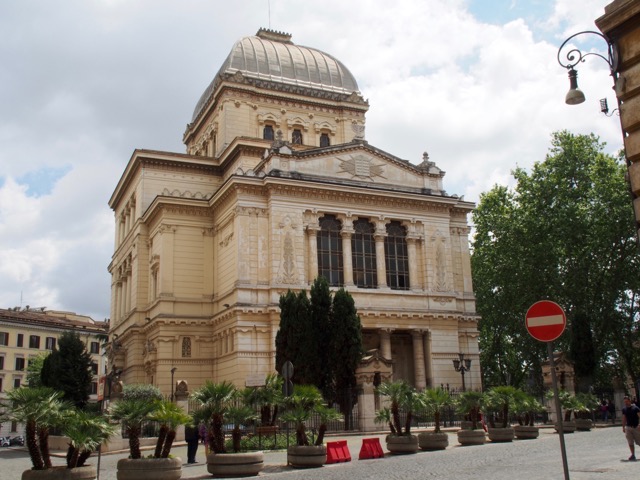
Front of the sanctuary.
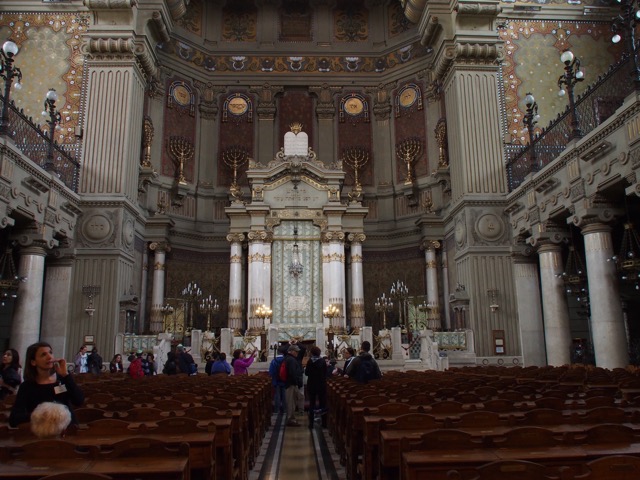
The ark.
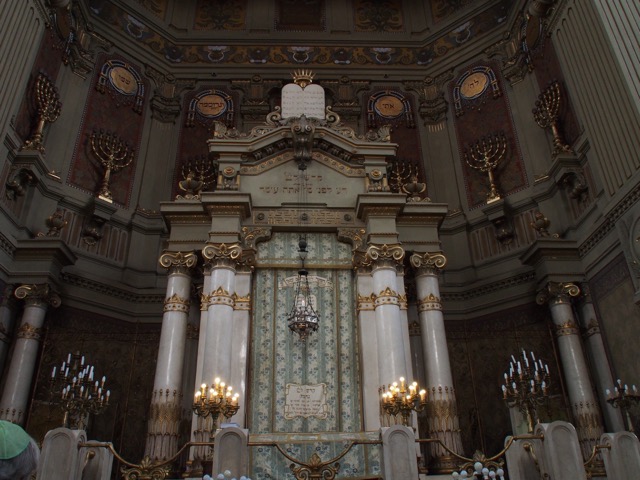
Ner Tamid, Eternal Light.
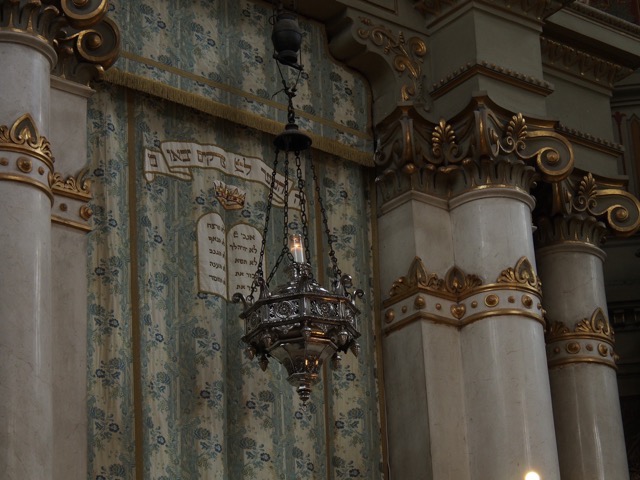
Squarish dome painted with the colors of the rainbow, symbolizing God’s promise to Noah that there would be no more floods.
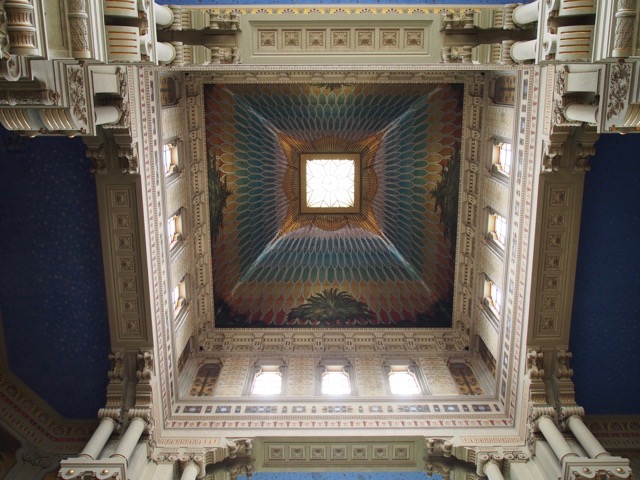
Stained glass windows of the turn of the 20th century Liberty (Art Nouveau) period.
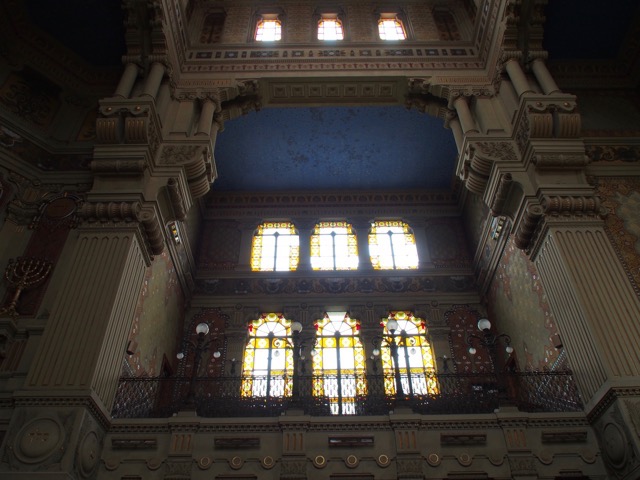
I also visited the museum featuring Jewish ritual and home items and history of the Jews in Rome through present day. Inside the museum, in a separate room, is the Spanish Synagogue, though it was actually moved there in 1932. No pictures were allowed.
Fountain inscribed with the name Gavriel Di Segni (1649-50), donated to a synagogue in the ghetto.
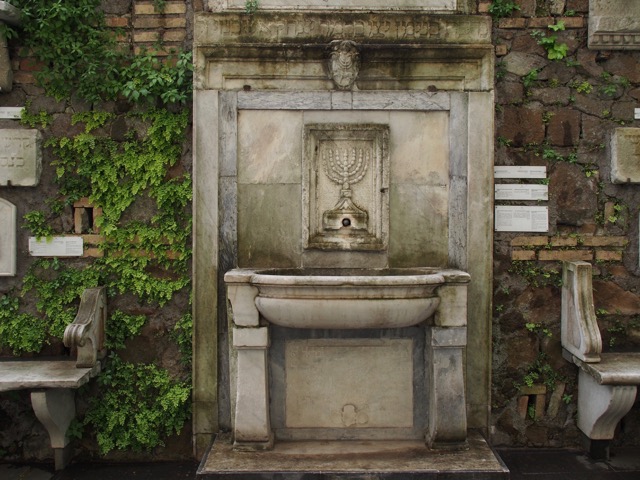
Following the visit, I walked through the Jewish ghetto area, stopping by the 16 October 1943 square (the deportation),
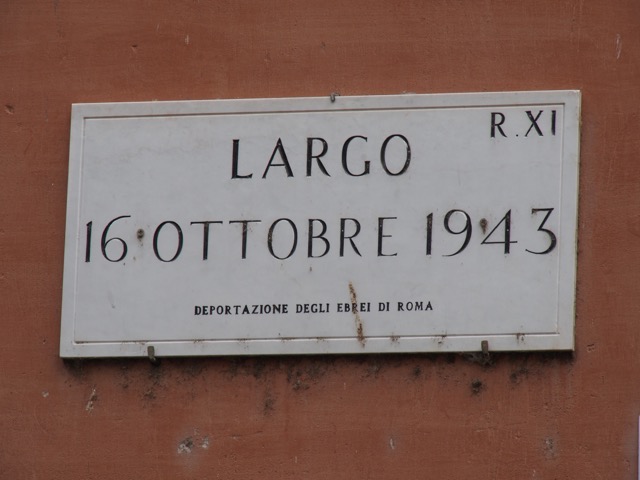
There were a number of these plaques in the ground by various doorways, commemorating those deported.
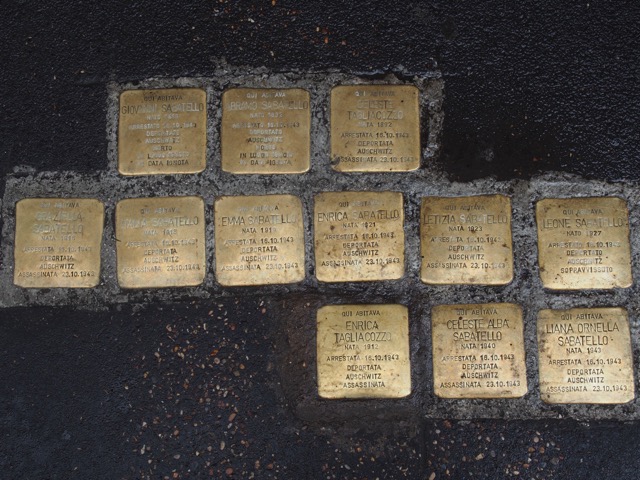
The endpoint of my ramble was the Capitoline Museum in Piazza Venezia.
On the way, I stopped at Largo Argentina, featuring some of the oldest ruins in Rome.
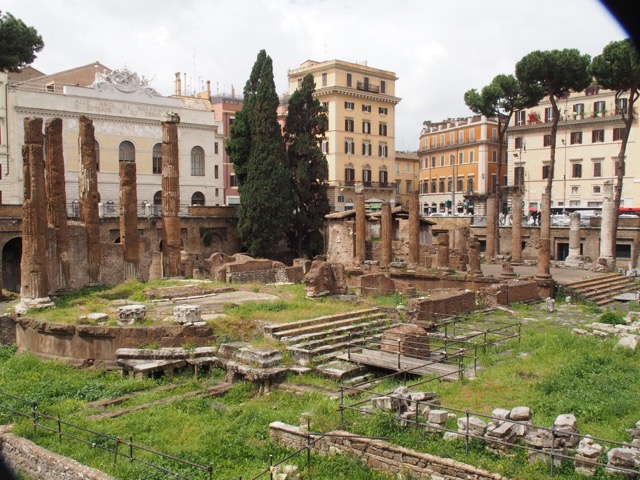
I had to rush a little because of the time, but managed to find the Marcus Aurelius equestrian statue, the Bernini Medusa, the She-Wolf, the Boy Extracting a Thorn, and then found my way to the Tabularium section of the museum, a spot where there is a great view of the Forum, with the Colosseum in the distance.
Marcus Aurelius.
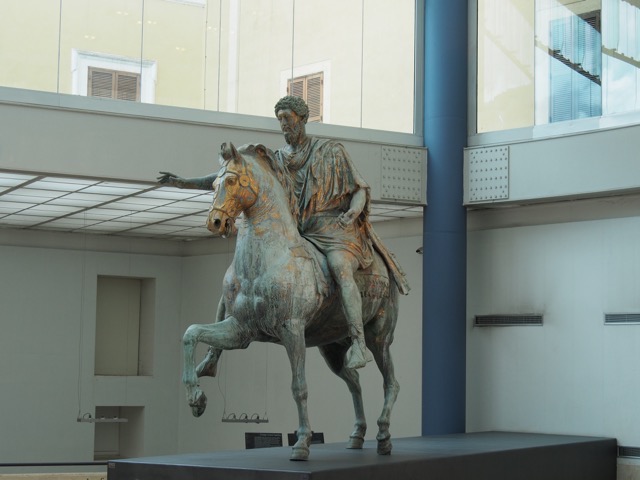
Capitoline She-Wolf, suckling Romulus and Remus symbol of Rome. This bronze probably dates to the 11-13th century, with the twins added in the 15th century.
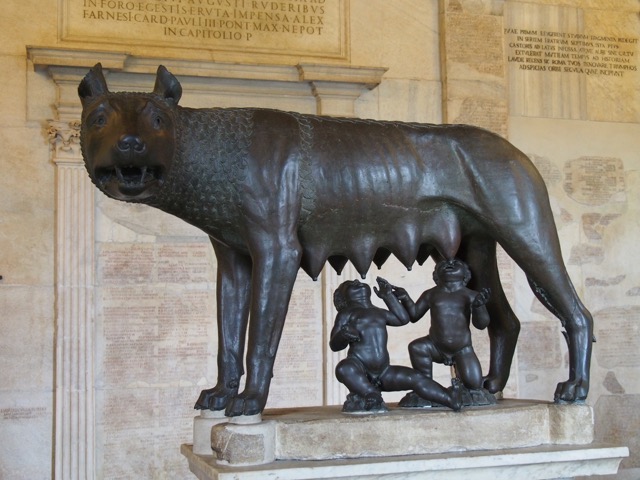
Boy Extracting a Thorn, Greco-Roman Hellenistic bronze sculpture, probably 1st century CE.
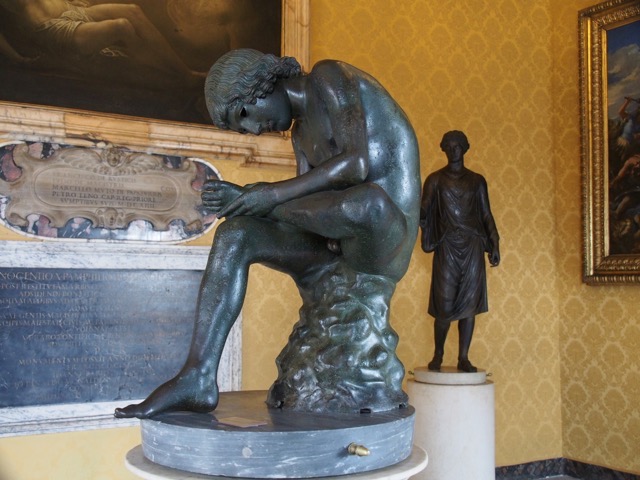
Bernini Medusa, 1630s.
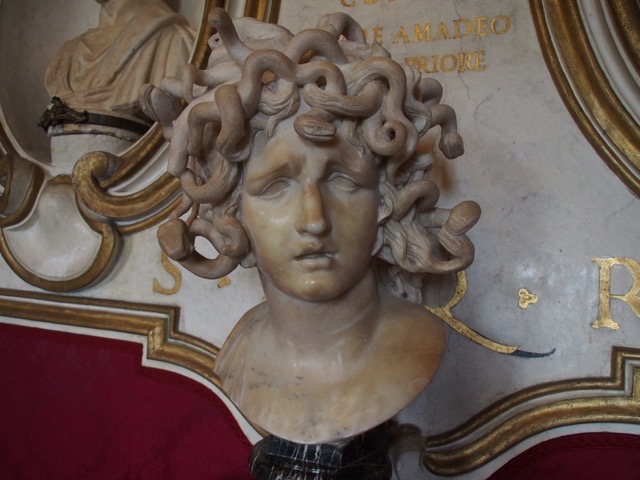
View of the Forum from the Tabularium.
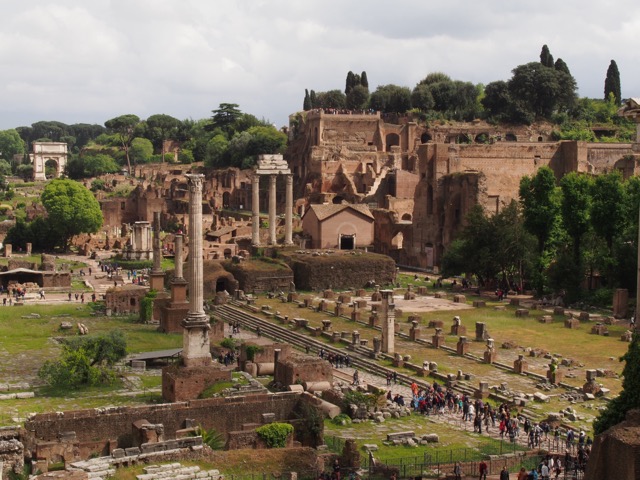
View from the Tabularium of the Castor and Pollux ruin.
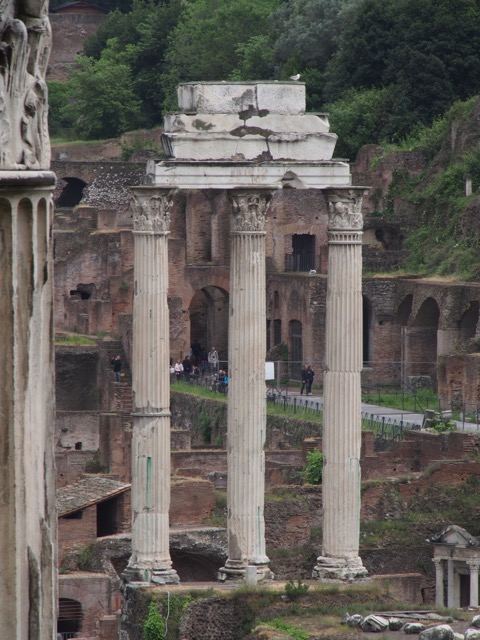
Then I headed back by tram to the hotel, met up with Larry, and headed back to Trastevere to wander around and eventually get dinner, this time at Osteria Otello (fried artichoke, salad, pizza). Then back to the hotel and bed.
Links:
--
Larry and Eileen Samberg

















